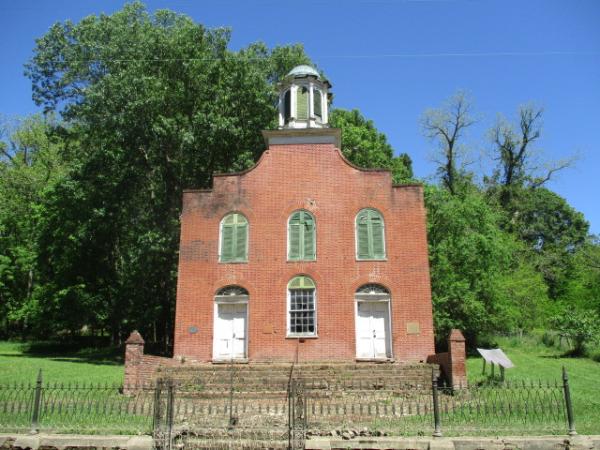| Rodney Presbyterian Church Jefferson County Mississippi |
| Rodney Presbyterian Church was constructed in 1832, so it's stood sentry duty for almost 190 years. The fact that the venerable old building still stands today is something akin to a miracle. Luck was on its side with its location. Rodney floods on a fairly regular basis, but the church is on a ridge, so, unlike its neighbor, Rodney Baptist Church, for the most part, it's been spared from recurring flood waters. However, time has tried to do what the river and the shelling from a Civil War gunboat could not. And it has almost succeeded. Though the church is actually in danger of structural collapse, we have reason to be hopeful that it can be saved. The Rodney History and Preservation Society recently purchased the building and is currently raising funds toward securing emergency structural support. They are a group of industrious, dedicated people and I hope their efforts will be the salvation of this historic church. -- Nancy |
| The pictures on this page were taken by my son, daughter-in-law and granddaughter on a recent trip to Claiborne, Jefferson and Adams Counties. They visited historic churches, cemeteries and a synagogue in Port Gibson. They strolled through the haunting ghost towns of Rocky Springs and Rodney and visited their ancient cemeteries. They took photos in cemeteries that author Eudora Welty photographed in the 1930's, when they had already been abandoned by towns that had all but ceased to be. And they wondered at the fragile nature of the monuments we build, believing that they will last forever. -- Nancy (May, 2019) |
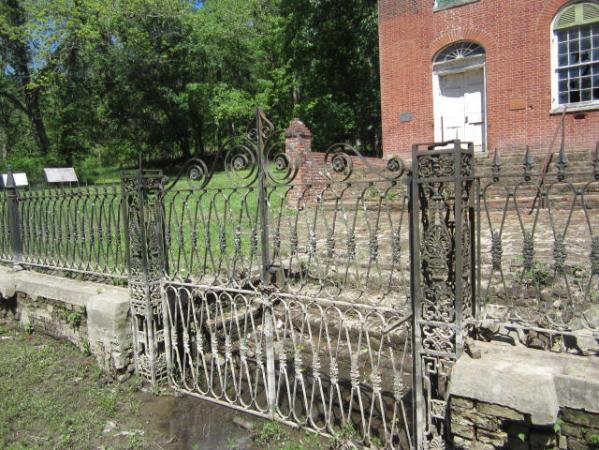
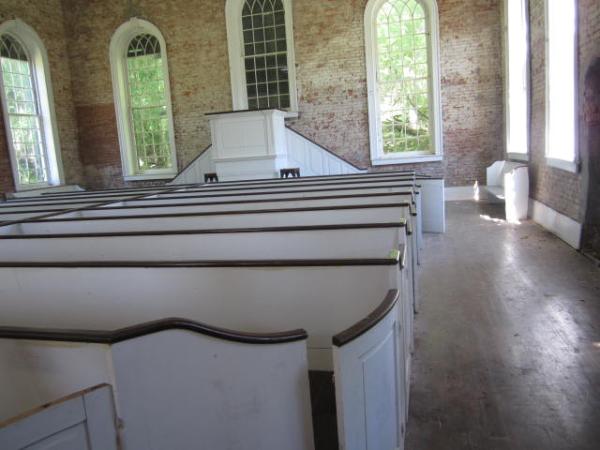
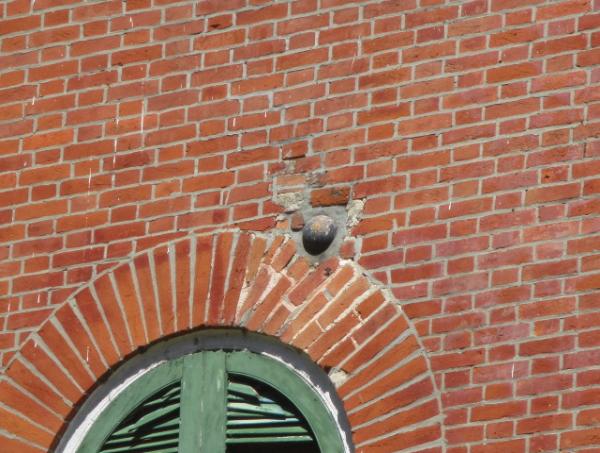
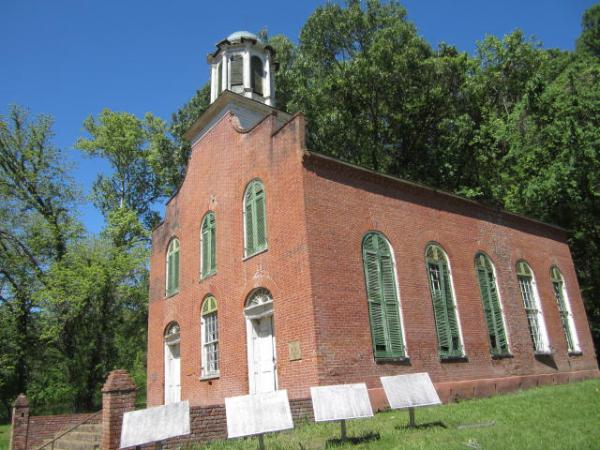
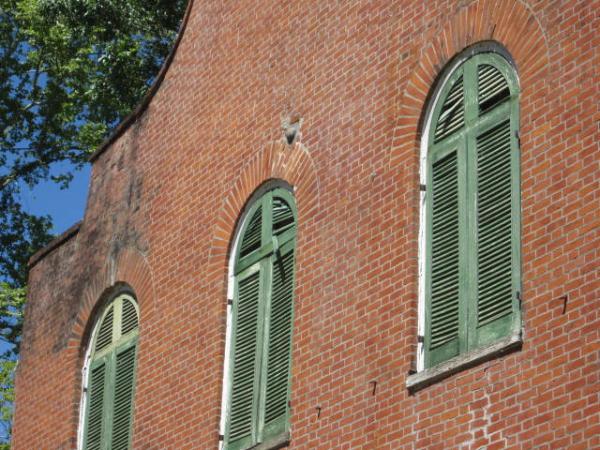
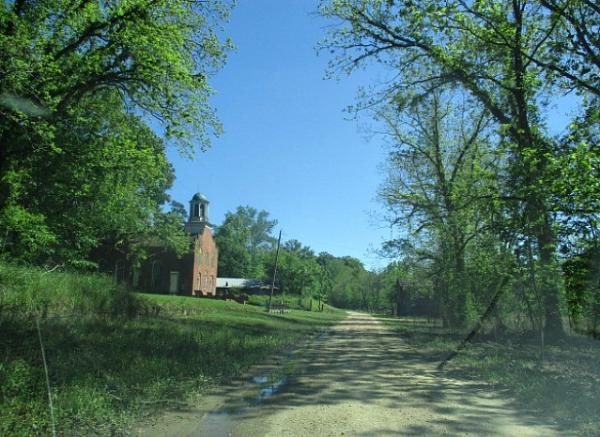
| From a Windsor-Battlefield Tour marker: Old Rodney Presbyterian Church Listed in the National Register of Historic Places, the church was begun when the 1828 Mississippi Legislature granted a charter of incorporation to the Presbyterian Church of Petit Gulf. Later in 1828, the town of Rodney was incorporated, the community and the church becoming known as Rodney, rather than Petit Gulf. Presbyterian activity in Rodney was apparent prior to creation of the present church structure. When Rev. John Hutchinson came in 1830 as supply minister for one year, there were at least two members and services were held in a barroom. The present brick church was dedicated to the worship of God on the first day of 1832. The dedication sermon was preached by Rev. Dr. Jeremiah Chamberlain, founder and president of Oakland College. According to tradition, one thousand silver dollars were cast into the mold of the church bell. The cemetery is located on the wooded bluff east of the church and contains remains of Civil War trenches and graves of river travelers. |
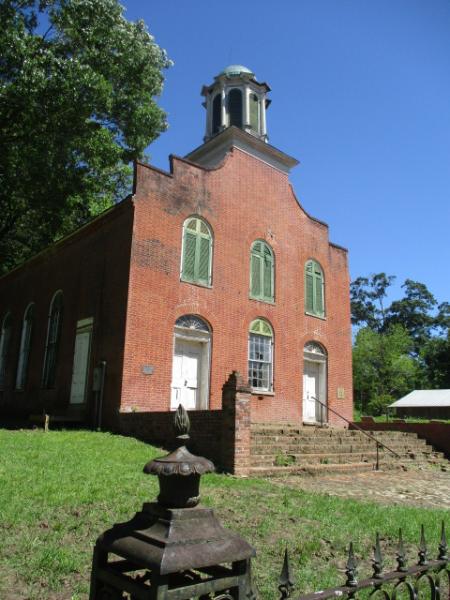
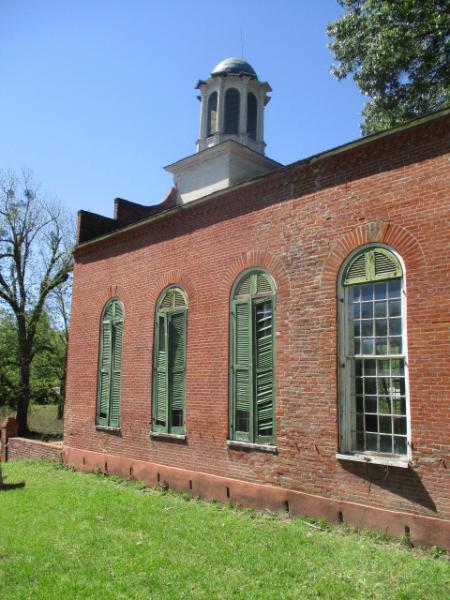
| From a Windsor-Battlefield Tour marker: Old Rodney to Bruinsburg Road This early nineteenth century road was one of two connecting the old town of Rodney with Claiborne County settlements. Composed of loess soil, the old roadbed and roadside bluffs remain today much as they were 150 years ago. |
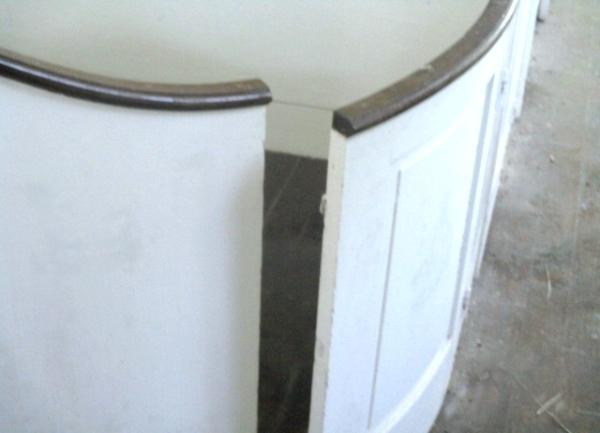
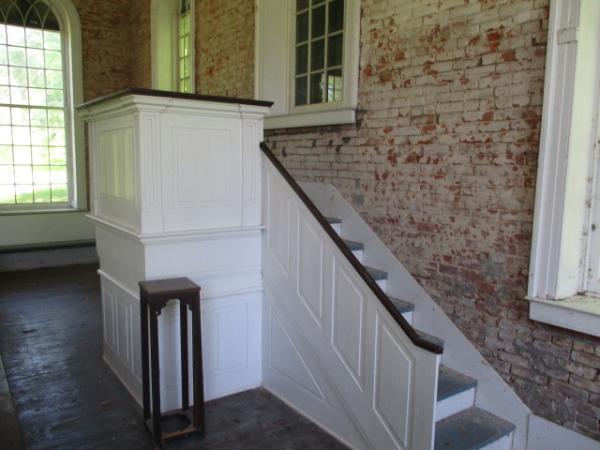
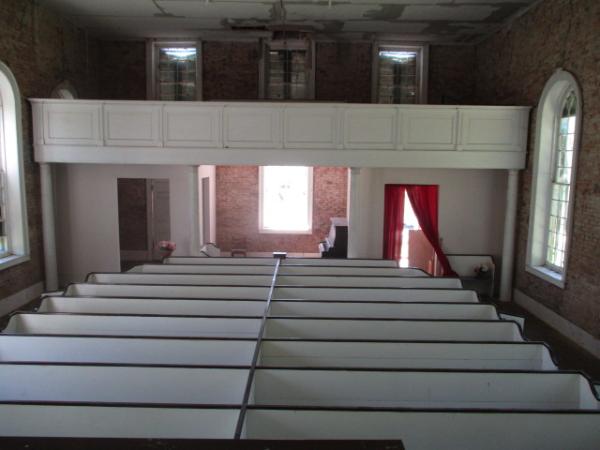
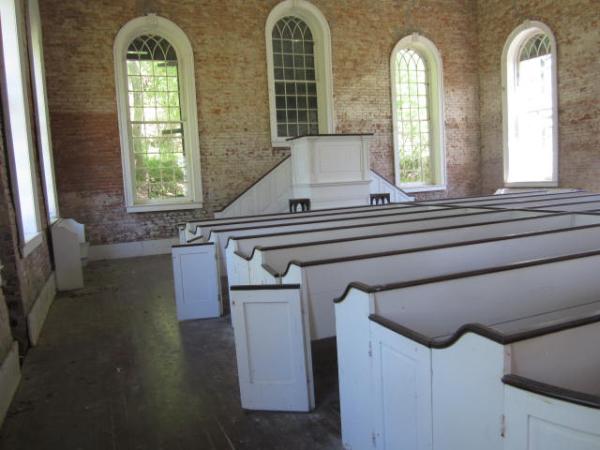
| The church has a solid shot above the middle window, resulting from an incident that occurred when a group of men from the USS Rattler, docked on the river at Rodney, decided to attend services one Sunday. A unit of Confederate cavalry, camped nearby, began arresting them as prisoners of war. Shooting started inside the church and the Rattler returned fire, striking the building. When it was all over, the Rebels had taken 17 prisoners, including the captain and a lieutenant. The unlucky Rattler became the butt of many jokes, the incident becoming known across the country - the first time in history that a small cavalry squad had ever captured the crew of an ironclad gunboat. The shell lodged in the wall of the church today isn't the original round. That shell eventually fell out and was replaced by the current round (cemented in place for safety) during a restoration in the 1990's. |
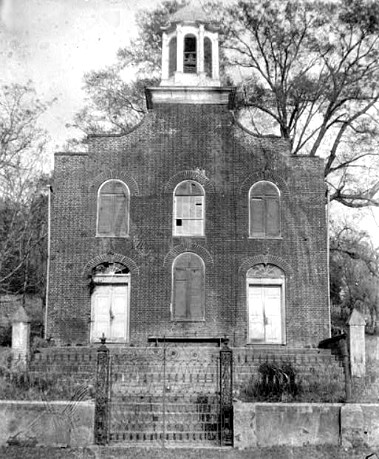
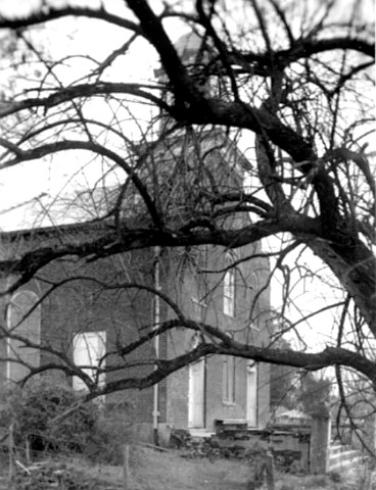
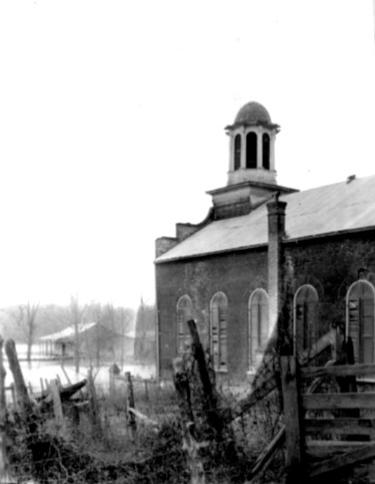
| The three photos below were taken in February, 1937, at the time of the great Ohio and Mississippi River flooding of that year. In the last picture, you can see the flood waters across the way from the church. But Rodney Presbyterian is sitting above the water and out of danger. |
| Efforts to support Rodney Presbyterian Church's preservation: Rodney History and Preservation Society The link to this page is: http://old-new-orleans.com/Rodney_Presbyterian_Church.html Other pages about Rodney: Ghosts Along the RIver: The Old Port of Rodney 1843 Yellow Fever Epidemic in Rodney Recollections of Rodney, pub. 1885 Rodney Cemetery Rodney Baptist Church ~ ~ ~ Back to Road Trip Index My G-Grandfather's Attic - Home Whispers ... |
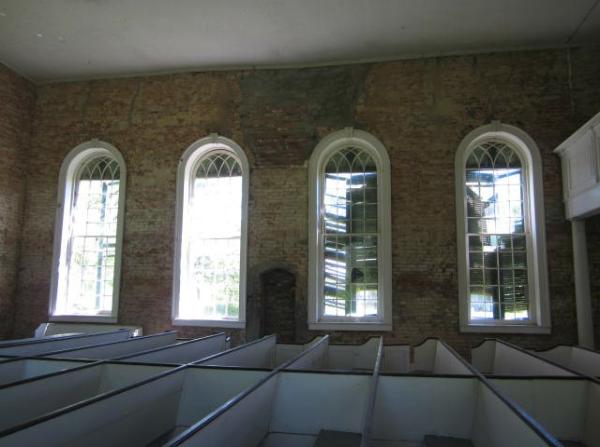
| Eudora Welty, writing about her visit to Rodney Presbyterian Church in the 1930's: Mr. John David's boy opens the wrought-iron gate to the churchyard of the rose-red church and you go up the worn concave steps. The door is never locked. It is a church upon whose calm interior nothing seems to press from the outer world. Even cannonballs were stopped by its strong walls and are in them yet. It is the kind of little church in which you might instinctively say prayers for your friends. |
